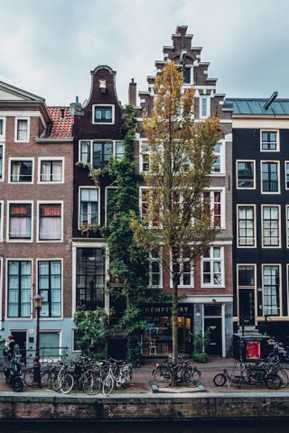
Just 4 decades ago, downtown Pittsburgh was absolutely nothing like what it is today.
Its main industry, steel, had faded. Unemployment was at 18%. Numerous urban neighborhoods had suffered from neglect-fueled blight and a flight to the suburbs.
Reed Pirain reports that, nowadays, Pittsburgh’s urban center and suburban options reflect each other’s different key benefits when residents consider where they should settle down, invest in a home, retire, or raise a family.
Across the whole country, it is becoming increasingly difficult to choose between these two. A thorough review and explanation of each locality may help to make the decision easier.
Comparing the Basics
Until the mid-1800s, most people in the United States lived and worked in rural areas. Now, a whopping 83% of the American population lives in urban areas, a 20% rise since 1950 according to the United Nations.
Such urbanization is mostly due to urban sprawl, and the presence of these largely populated metropolitan areas causes the line between urban and suburban areas to blur over time.
In general, urban living includes a central, densely populated area where people live, work, and play. Many urban areas boast a plethora of universities, numerous businesses of various industries, restaurants, and dining options.
Suburban areas surround urban centers, but many of them have grown toward the edges of the more urbanized areas. They tend to sport some of the same amenities that urban centers provide, but they typically lack the common distinctive elements of city living.
City Living
Those living in urban areas experience something of a tradeoff. To live in a vibrant city, residents are often subjected to crowdedness, noise, and an increased cost of living. There are numerous benefits as well, though.
There are usually more options for jobseekers in urban areas, which offer a wide and diverse array of fields and industries. Pittsburgh is an up-and-coming tech hub, for example, while banking opportunities are king in Charlotte, North Carolina. Those living in urban areas also usually have a fairly short commute.
City centers are home to far more entertainment and cultural events and locations compared to the suburbs. There are performing arts centers, art galleries, music venues, theaters, and much more. There is also better access to public transportation, such as subways and buses.
There is often more diversity seen in urban areas, but the populations of certain suburbs have become far more diverse in recent years as well.
Traffic, noise, and pollution are almost always just a part of urban living. However, most people that choose to live in such areas don’t seem to mind – it adds to the urban charm.

Suburban Life
Suburbs can be anywhere from 15 minutes to a few hours from the nearest urban area. This can be considered both a positive and a negative trait. Living close to, but not directly in an urban area means that one can take advantage of the many amenities of the city without being subjected to its constant hustle and bustle.
Living in the suburbs is often less expensive than in urban areas, but this ultimately depends on the location. In many states, the reverse is true. Homes with yards are larger, and there tend to be more options for outdoor and healthy activities, along with highly rated schools. Suburbs can be crowded, but the residents are still far more spread out.
Fewer job opportunities are found in suburban areas, which may leave residents with a long commute to the nearest city center. Additionally, suburbs tend to have more appeal for older residents or those raising a family who want a slower, quieter lifestyle.
The Choice is Yours
Individuals who prefer the vibrant pulse of the city or the serene charm of the suburbs are each presented with unique advantages that cater to their diverse lifestyles and preferences. Urban areas provide unparalleled access to cultural amenities, career opportunities, and a bustling social scene, while suburban living offers tranquility, space, and a strong sense of community. The key lies in understanding one’s personal needs, priorities, and aspirations in order to make an informed decision.
Ultimately, whether one chooses the energy of the city streets or the tranquility of suburban neighborhoods, both urban and suburban living have the potential to enrich lives in meaningful ways. Embracing the beauty and possibilities offered by each allows individuals to create a unique life that resonates with their own desires and aspirations.

